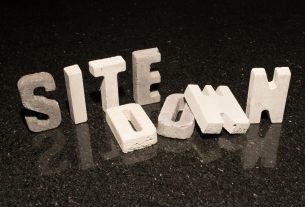The highway and the web have one thing in common. On both, speed kills.
Ironically, though, it’s not the same kind of speed we’re talking about.
While racing down the highway increases your chances of crashing, having a website that takes too long to load will send customers away and kill your online business.
To make things worse, Internet users are an impatient lot. Most of them only need 3 seconds to click away from pages with a slow load time.
As a site owner, you’re definitely concerned by this. And that’s why we crafted this blog: to show you how you can give your site speed a quick boost.
Let’s dash in, shall we?
Choose a Fast Hosting Service Provider
There are thousands of web hosting service providers.
All of them promise to offer the fastest speeds. In truth, however, most providers don’t live up to their word.
It’s your job to conduct a thorough research and find the fastest hosting provider to power up your site. Read reviews on credible review sites such as PC Mag, comb through forums like Quora, and get recommendations from other site owners.
Sure, such providers charge a steep price, but it’s worth it. Would you rather go for a cheap hosting provider with slower speeds and risk affecting your SEO?
Deploy a Content Delivery Network
Let’s get one thing clear: The heavier the content on a site page, the longer it will take the load.
This is why SEO specialists advise site owners and content managers to avoid using large images with complex file formats.
But what do you do if you can’t avoid using heavy content? Maybe you run a fashion blog, and such blogs are image-heavy.
The solution is to deploy a content delivery network. Your media files will be hosted on the CDN’s servers, leaving your site light and quickly accessible.
Turn on Browser Caching to Increase Page Load Time
When a user is trying to access your site, their browser sends an HTTP request to the site’s servers. This request ensures the browser is able to download images, style sheets, Java scripts and other elements on your site.
Downloading these files takes additional seconds, which slows down your site’s page load time.
To prevent this, enable browser caching. Caching enables browsers to access your page without sending HTTP requests on subsequent visits. This shaves off the additional seconds a browser needs to download those elements.
Avoid Page Redirects
Know that feeling when you type abc123.com into your browser and end up on xyz123.com?
Yeah, page redirects suck. You almost feel cheated. These redirects increase the number of HTTP requests browsers have to make before reaching your target landing page.
Having landing page redirects will not only annoy your site visitors but also increase page load time and ultimately, sending them away.
There Are Plugins You (Probably) Don’t Need
In a way, websites are like smartphones.
Just like you can install as many apps on your phone as it can hold, you can also install as many plugins on your site as you can find. There is a plugin for almost everything.
While it’s fun to try out different plugins, installing too many of them will take a toll on site speed.
Give your plugins a second look, and uninstall those your site doesn’t need to function properly.
Now Go Rev Up Your Site!
With today’s impatient Internet users coupled with the fact site load time is a Google ranking factor, you can’t afford to have a slow site.
With these tips, you should no doubt be able to get your site revving, ready to speed off!
One last thing before you go. Remember to use an online site monitoring tool to alert you when your site stops working optimally. Fixing such issues quickly is crucial to keeping site visitors happy.




